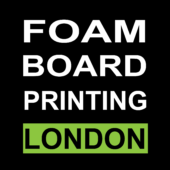Foam board, also known as foam core board, is a versatile and lightweight material commonly used for a variety of applications in arts and crafts, photography, advertising, and construction. It is composed of a foam core sandwiched between two layers of paper or plastic. This unique construction gives foam board its characteristic lightweight yet sturdy structure, making it an ideal choice for many creative and practical projects.
In this article, we’ll explore the characteristics, uses, and benefits of foam board, as well as provide some tips for working with it.
Characteristics of Foam Board
- Lightweight: Foam board is known for being very light, making it easy to handle, transport, and install.
- Stiff and Rigid: Despite its lightness, foam board provides good structural stability and stiffness, making it a durable choice for various projects.
- Smooth Surface: The outer layers of foam board are smooth, providing an excellent surface for printing, painting, and adhering materials.
- Easy to Cut: Foam board can be easily cut with a sharp knife, allowing for precision and customization.
- Variety of Thicknesses: Foam board comes in a range of thicknesses, typically from 3 mm to 10 mm, catering to different project needs.
- Affordable: Foam board is a cost-effective option for many projects, making it accessible for various budgets.
Common Uses of Foam Board
- Signage and Displays: Foam board is often used to create signs, displays, and exhibition boards due to its lightweight nature and smooth surface for printing.
- Mounting and Framing: Photographers and artists use foam board to mount and frame their work for exhibitions or presentations.
- Prototyping: Designers and engineers use foam board to create prototypes and models for testing and demonstration purposes.
- Arts and Crafts: Foam board is a popular choice for school projects, model-making, and DIY crafts.
- Theater and Film: In the entertainment industry, foam board is used to create props, backdrops, and set pieces.
- Construction and Insulation: In construction, foam board can be used as an insulation material or as part of temporary wall structures.
Tips for Working with Foam Board
- Cutting: Use a sharp utility knife or craft knife to cut foam board. A straight edge can help ensure clean, precise cuts.
- Adhesive: When attaching materials to foam board, use adhesives that are compatible with both the foam core and outer layers, such as double-sided tape, spray adhesive, or glue.
- Storage: Store foam board flat to prevent warping and damage.
- Handling: Be gentle when handling foam board to avoid dents or creases in the material.
- Finishing Edges: If visible edges need a clean finish, consider using colored tape or paint to cover and protect the foam core.
Conclusion
Foam board is a versatile and affordable material with a wide range of applications across industries such as arts, crafts, photography, advertising, and construction. Its lightweight yet sturdy structure makes it an excellent choice for projects that require easy handling and transport. Whether you’re creating signs, displays, prototypes, or art projects, foam board provides a smooth surface for customization and ease of use. By following some basic tips for working with foam board, you can achieve professional-looking results for your creative or practical projects.
